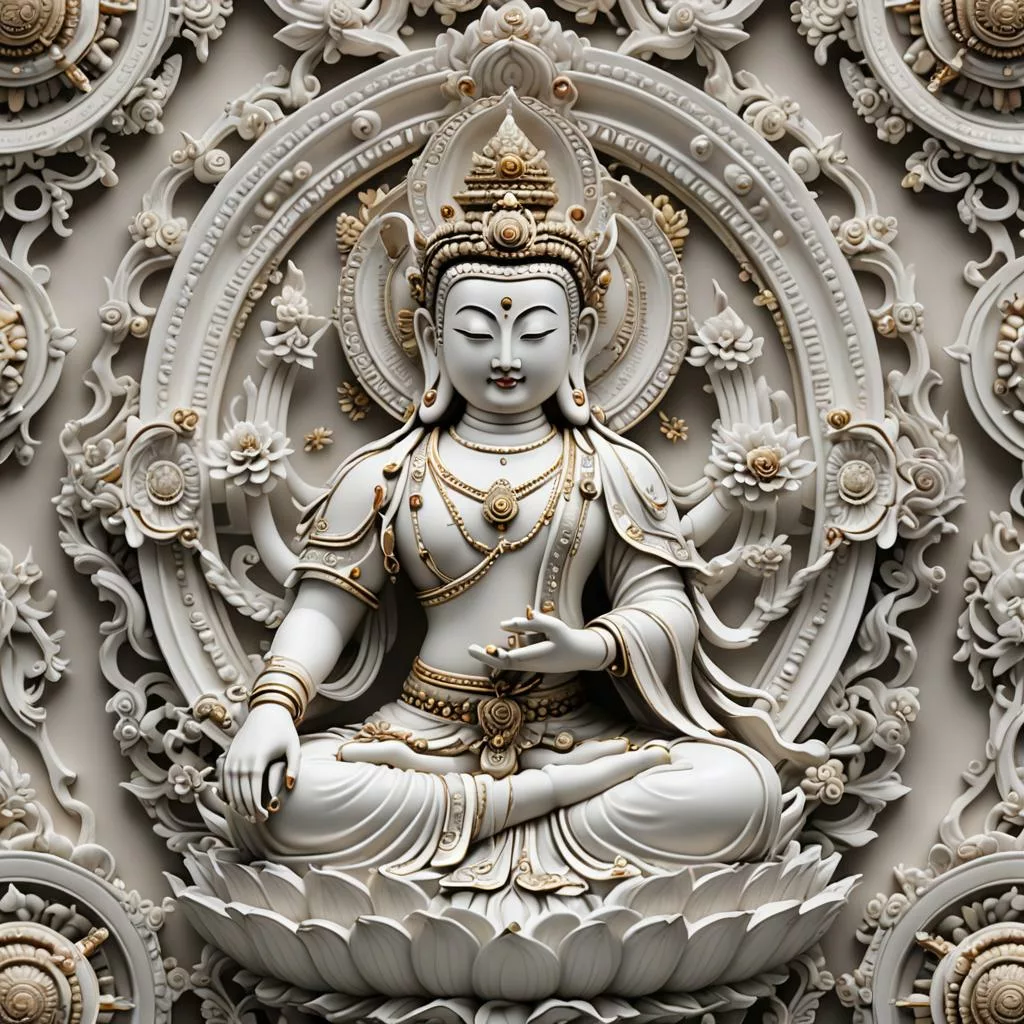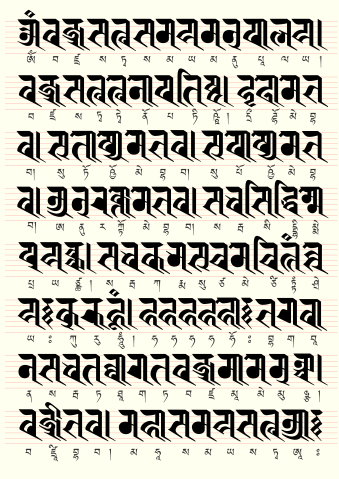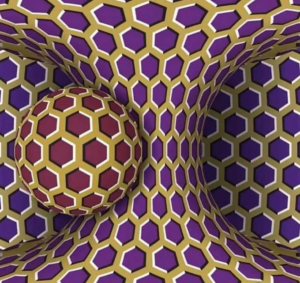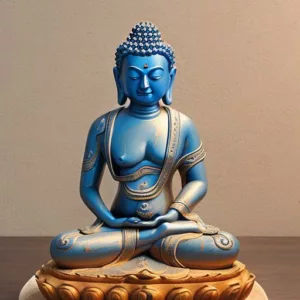
The Vajrasattva Mantra is a 100 syllable mantra in Sanskrit associated with the deity Vajrasattva (Dorje Sempa). The mantra is used for purification as preparation for abhisheka. It is also used to purify mistakes in practice.
I have heard many song versions of the Vajrasattva Mantra. It’s a bit unwieldy for singing, but some of the versions are quite good, if hard to commit to memory. It’s great to memorize the mantra and do it while walking or at other times. If we can learn the meaning, as well, that’s great.
Secrets of Meditation for Anxiety
Like millions of people, you may have suffered from anxiety for years. Meditation, yoga, peaceful music – it never works. It takes too long, and it’s not stable. Why? Because peace is treated as a cause for freedom, but it’s not – it’s the result. The cause to free yourself from anxiety is completely different.
Click now to Overcome Anxiety for good.
Table of Contents
Vajrasattva Mantra Summary
| Feature | Description |
|---|---|
| Central Entity | Vajrasattva Mantra (Tibetan Buddhism) |
| Type | Chant, Purification Practice |
| Function | * Purify negative karma and obscurations * Accumulate merit and positive karma * Bring peace and harmony |
| Forms | |
| 100-Syllable Mantra (Yig brgya) | * Core mantra used in Tibetan Buddhist Ngondro (preliminary practices) for purification. * Complex pronunciation and spelling variations exist across Vajrayana lineages due to historical transmission and adaptation. |
| 6-Syllable Mantra (Om Vajrasattva Hum) | * Shorter, more widespread version used for general purification, accumulating merit, and cultivating peace. * Seen as capturing the essence of the 100-syllable mantra. |
| Practice | * Core Vajrayana Buddhist practice, often accompanied by visualization of Vajrasattva. * Specific methods of recitation and visualization can vary depending on lineage and teacher instruction. |
| Relationship to Vajrasattva | * Mantras associated with Vajrasattva, a Buddha-figure symbolizing purification and enlightenment. * Chanting the mantras is seen as a way to connect with Vajrasattva’s enlightened qualities. |
| Possible Connections | * Mantra recitation linked to Vajrayana concepts of skillful means (upaya) and wisdom (prajna). * Practice seen as a form of yoga (mental discipline) within Vajrayana Buddhism. |
| Important Note | * It’s recommended to approach Vajrasattva mantras with respect and proper understanding. * Consulting a qualified Vajrayana Buddhist teacher is ideal for receiving guidance on pronunciation, meaning, and appropriate use within your practice. |
| Additional Notes | * The 100-syllable mantra may be found in written form but memorization through proper instruction is encouraged for practice. |
How to meditate like a yogi
and enter profound samadhi
Meaning of the Mantra
The mantra is commonly written in our alphabet as:
OM VAJRASATTVA SAMAYAM ANUPALAYA / VAJRASATTVA TVENOPATISHTHA / DRIDHO ME BHAVA / SUTOSHYO ME BHAVA / SUPOSHYO ME BHAVA / ANURAKTO ME BHAVA / SARVA-SIDDHIM ME PRAYACHA / SARVA-KARMASU CHA ME CHITTAM SHREYAH KURU HUM HA HA HA HA HOH BHAGAVAN / SARVA-TATHAGATHA-VAJRA MA ME MUNCHA / VAJRI BHAVA MAHASAMAYASATTVA AH
| OM VAJRASATTVA | Invoke the indestructible Being |
| SAMAYAM ANUPALAYA | protect the sacred vow |
| VAJRASATTVA TVENOPATISHTHA | Remain close to me |
| DRIDHO ME BHAVA | Be steadfast for me |
| SUTOSHYO ME BHAVA | Have delight in me |
| SUPOSHYO ME BHAVA | Expand my noble traits |
| ANURAKTO ME BHAVA | Love me |
| SARVA-SIDDHIM ME PRAYACHA | Bestow the powers |
| SARVA-KARMASU CHA ME CHITTAM SHREYAH KURU | Make all my activities virtuous |
| HA HA HA HA HOH | 4 Immeasurables and 4 kayas, rejoice |
| BHAGAVAN SARVA-TATHAGATHA-VAJRA MA ME MUNCHA | Blessed indestructible essence of all Buddhas, do not abandon me |
| VAJRI BHAVA MAHASAMAYASATTVA | Remain indestructible, great sacred vow being |
Sanskrit Version

Vajrasattva Mantra Comparison Table
- 100-Syllable Mantra (Yig brgya): This is the more extensive and formal version used in Tibetan Buddhist practices, particularly Ngondro (preliminary practices) for purification. Due to its complexity, the pronunciation and even spelling can vary slightly across lineages.
- 6-Syllable Mantra (Om Vajrasattva Hum): This is a shorter and more common version used for general purification, accumulating merit, and bringing peace. It’s considered to capture the essence of the 100-syllable mantra.
| Feature | 100-Syllable Mantra (Yig brgya) | 6-Syllable Mantra (Om Vajrasattva Hum) |
|---|---|---|
| Tibetan Name | ཡིག་བརྒྱ་ (yig brgya) | ཨོཾ་ཝྃ་ཛྲ་སattvaཧཱུྃ། (om vajrasattva hum) |
| English Translation | “Hundred Syllable” | “Om Vajrasattva Hum” |
| Usage | Formal purification practices (Ngondro) | General purification, peace, merit |
| Complexity | More complex, pronunciation and spelling variations exist across lineages | Simpler, widely used and pronounced |
| Memorization | Encouraged for practice | Easier to memorize |
| Availability | Lineage specific versions | Widely available |
| Function | Deep purification of negative karma and obscurations | General purification, accumulating merit, bringing peace |
| Connection to Vajrasattva | Core aspect of Vajrasattva practice | Essence of Vajrasattva’s purifying qualities |



According to the sublime Dilgo Khyentse, Vajrasattva Mantra is the quintessence of all mantras.

May all beings be happy
May all beings be peaceful
May all beings be safe
May all beings awaken to the light of their true nature
May all beings be free







